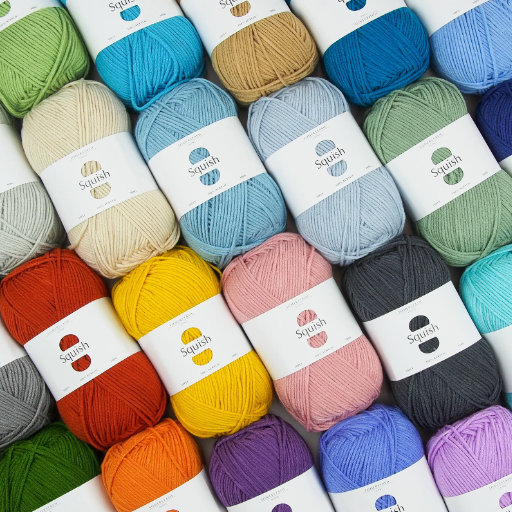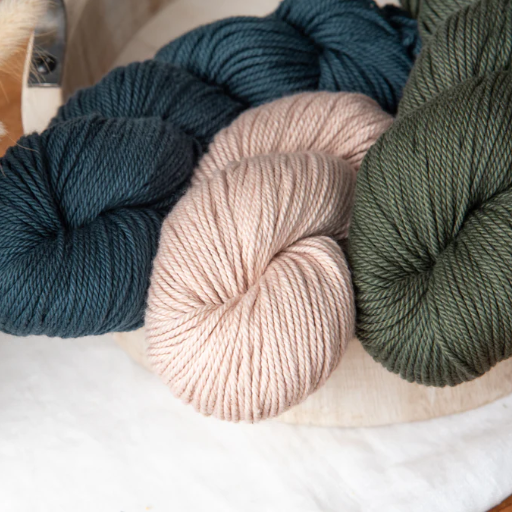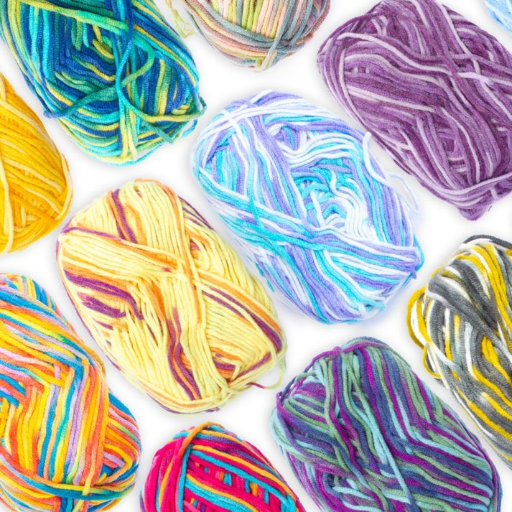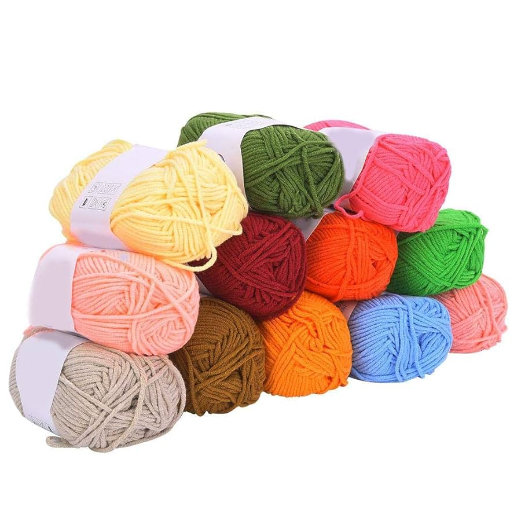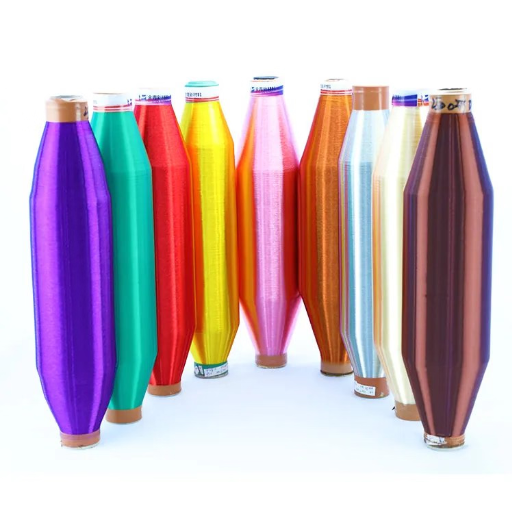Like every other material, knit sweaters made from acrylic yarn need cared for on a specific level. This level however differs a lot from taking care of material made with natural fibers like wool and cotton. From an economical viewpoint, acrylic yarn is a synthetic fiber which is known for its strength. This guide will help knitwear owners understand how to keep their acrylic knitwear soft and long-lasting removing the fear of color fading. This article explains everything that encompasses the maintenance of acrylic yarn – cleaning techniques and drying practices, stockpiling suggestions for common problems, and everything in between. These tips should help give beginners confidence in taking care of their handmade knit creations, and more advanced knitters the knowledge they need to keep their favorite pieces in their collection for years to come.
What is Acrylic Yarn and Why is it Popular?

Acrylic yarn is composed of polyacrylonitrile, a type of synthetic fiber. Because of its low price and long-lasting attributes, it is widely utilized for knitting and crochet work. Acrylic yarn is not like natural fibers; it is lightweight, does not cause any allergies, and is moth proof which makes it perfect for everyday knitwear. Additionally, its popularity stems from being able to “fashion” in various colors and textures, and softness, all while being easier to care for than sheep wool because it is machine washable. These qualities make acrylic yarn a favorite choice for both new and experienced crafters.
Properties of Acrylic Fibers
The acrylic fibers are synthetic polymers made by the process of polymerization and the main monomer used is acrylonitrile. As my research indicates, these fibers are highly valued for their tensile strength, elasticity, and shrinkage resistance. Their effectual shape retention allows frequent washing, thus enhancing their utility for daily use. In addition, they are light and thermally stable, which combined with their exceptional dyeing ability enables the production of a wide range of colors and textures for different purposes. These features of acrylic fibers surely help to explain their rapid acceptance in the textile industries and other sectors.
Why Yarn is a Popular Choice for Knitters
Yarn is a popular choice for knitters due to its versatility, accessibility, and wide range of material options. It comes in a variety of fibers, including wool, cotton, acrylic, and blends, catering to different project requirements and personal preferences. Wool yarn, for example, is prized for its elasticity, warmth, and durability, making it ideal for garments like sweaters and hats. Acrylic yarn, on the other hand, is budget-friendly, hypoallergenic, and available in an extensive range of colors and textures, suitable for beginners or cost-effective projects. Additionally, yarn is widely available through craft stores, online retailers, and specialty shops, ensuring that knitters can easily find materials for their needs. Its uniform thickness and ease of use make it especially appealing for creating well-structured stitches and intricate patterns, whether for functional wearables or decorative items.
Benefits of Using Acrylic Yarn in Your Projects
Because of its low cost and versatility, acrylic yarn is great for a variety of projects. In the primary place, it is claimed that its relations are highly durable and resilient. Capable of withstanding frequent use and washing, the material won’t lose its shape or color. Moreover, acrylic fibers come in countless colors and weights. I can find the perfect match for any design requirement, be it lightweight shawls or heavy blankets. Its synthetic composition also makes it hypoallergenic and moth-resistant, a common problem for many others. For long-lasting projects, I often choose it. Last but not the least is acrylic yarn’s easy-care properties. People just love how practical it is for P clothes and other home décor pieces. It can even be put in a washing machine.
How to Properly Wash and Care for Acrylic Yarn Items

To properly wash and care for items made with acrylic yarn, follow these steps:
- Machine Washing: Most acrylic yarn items are machine washable. Use a gentle cycle with cold or warm water to prevent unnecessary wear or stretching.
- Detergents: Select a mild detergent that does not contain harsh chemicals or bleach, as these can degrade the fibers over time.
- Drying: Air drying is recommended to maintain the item’s shape and durability. If using a dryer, choose a low-heat or delicate setting to minimize potential shrinkage or damage.
- Avoid Excess Heat: Acrylic fibers can melt or warp under high temperatures. Never use an iron on acrylic yarn items unless it is set to an appropriate synthetic-safe setting.
- Storage: Store acrylic yarn items in a cool, dry place that is free from excessive moisture or direct sunlight to avoid discoloration or weakening of the fibers.
By adhering to these guidelines, you can ensure that acrylic yarn items remain durable, vibrant, and functional for years to come.
Choosing the Right Detergent for Your Knitted Items
When looking for a detergent for knitted pieces, fiber-gentle and safe options are essential choices in aggrandizing the knit’s integrity. Always opt for detergents specially labeled for fragile fabrics or wool since they typically don’t contain cruel chemicals, enzymes, or bleach that can destroy natural or synthetic fibers. For acrylic or synthetic knits, a mild, unscented detergent works best to avoid residue retention and loss of vibrancy for colors. Never use fabric softeners since they tend to coat the fibers and reduce their breathability. Hand-washing detergents or those made for machine washing on a gentle or cold cycle are the best and safest options. Always do a spot check to test whether the chosen detergent will be compatible with the material to be washed.
Hand Washing vs. Machine Washing: What You Need to Know
When deciding between hand washing and machine washing, understanding the key differences is critical for maintaining the longevity and quality of your garments. Hand washing is recommended for delicate fabrics such as silk, wool, or cashmere, as it allows for greater control over the washing process and minimizes the risk of stretching, shrinking, or fiber damage. Use lukewarm water and a gentle detergent, and avoid excessive wringing to preserve the fabric’s integrity.
On the other hand, machine washing is generally more effective for cleaning sturdy fabrics such as cotton, polyester, and denim. Modern washing machines come equipped with customizable settings for different fabric types, water temperatures, and spin speeds, allowing for an efficient and thorough cleaning process. To protect delicate garments in a machine, place them in a mesh laundry bag and select a gentle cycle.
Ultimately, the choice depends on the type of fabric, the care label instructions, and the level of soiling. Hand washing provides a gentler approach but is time-consuming, while machine washing delivers convenience and consistency for everyday wear. To achieve the best results, carefully assess the specific needs of your clothes before selecting a washing method.
Washing Acrylic Yarn on a Gentle Cycle
Acrylic yarn, which is a type of synthetic yarn, is constrained to a given amount of care when washing it and keeping it durable. Start by putting the yarn or crocheted items in a mesh bag to wash them safely. Only wash them on a gentle cycle and non-boiling water and do not use any bleach. Even detergent might break down the fibers, so use a mild one only. Ensure to pick delicate settings on the machine for washing as this will reduce ferocity of washing. Similarly spinning of the bed should also be kept minimal.
When the washing process is done, the items should be taken out quickly so that there is no permanent wrinkling. In case some remain try pushing them while damp. Use a towel to air dry them while placing them flat. Avoid tumble drying as this will only cause distortion of the fibers. If these tips and tricks are followed the lifespan of the garment is maximized while also protecting the use of acrylic fibers.
How to Dry Your Acrylic Yarn Creations

Firstly, if your acrylic yarn items are wet, gently press them using clean and absorbent towels and avoid wringing as it stretches the yarn fibers. After soaking out the excess water, place the item on a flat and dry surface to air dry further while maintaining its original shape. It is advisable to place the item in an area that provides sufficient ventilation, away from heat sources or sunlight which can weaken the yarn. To ensure even drying, remember to flip the item from time to time. Finally, do these steps to preserve the quality, shape, and sturdiness of your project.
Safe Methods to Dry Your Acrylic Garment
Begin the drying process by putting a clean, absorbent towel over the garment and gently pressing it down. Do not wring the towel as this causes aching distortion to the fabric. It is important to reshape the garment to its size and lay it down on a drying rack so it can dry without stretching or changing shape. The drying area should be well ventilated while avoiding high sunlight and excessive heat which will bear negative results over time. For even drying results flip the cloth from time to time. Following these steps will ensure that the acrylic garment is not fabric damaged while also preserving the condition of the garment.
Why Using a Low Heat Setting is Crucial
Considering how to manage the care of acrylic garments, it is best to utilize a low-heat setting so that these synthetic fibers are not damaged. High temperatures can lead to warping, melting, or even the fibers getting weakened due to acrylic being a thermoplastic material. A low setting is best for drying and ironing as it preserves the aesthetics and comfort of the garment. All these changes can be irreversible and added pilling or hardening of the texture makes it worse. Reducing heat exposure invariably leads to increased comfort and conservational status of the fabric. This method not only achieves the desired quality but also alleviates stress on the material ultimately elongating the lifespan of the garment.
Preventing Stretch and Deformation in Knitted Items
Knitted items are inherently stretchy due to their looped construction, making them vulnerable to deformation over time. To prevent stretching, it is vital to handle these fabrics with care during washing, drying, and storage. Use a gentle cycle or hand wash them in cold water with a mild detergent to minimize stress on the fibers. Avoid wringing or twisting the garment, as this can distort its shape. Instead, lay the item flat on a clean towel, gently press out excess water, and reshape it while damp before air drying.
For storage, fold the item rather than hanging it, as hanging can cause the fabric to stretch under its weight, especially in areas like shoulders or hems. If hanging is necessary, use padded hangers to distribute weight evenly and support the garment’s shape. Finally, avoid exposing knitted garments to prolonged high humidity or direct sunlight, which can weaken fibers and make them more prone to sagging. Adhering to these practices ensures that knitted items retain their original fit and appearance over time.
Common Mistakes When Washing Acrylic Yarn

- Using High Heat: Acrylic yarn is highly sensitive to heat, and exposure to hot water or high-temperature drying can cause fibers to become misshapen or melt. Always use cool or lukewarm water and air-dry the item to preserve its integrity.
- Using Harsh Detergents: Strong detergents or fabric softeners can damage acrylic fibers, leading to a rough texture. Opt for mild, gentle detergents specifically designed for delicate fabrics.
- Agitation in Washing Machines: Excessive movement during machine washing can lead to pilling or tangling. If using a washing machine, choose a delicate cycle and place the item in a mesh laundry bag for added protection.
- Overloading the Washer: Washing too many items together can crush or stretch acrylic yarn. Always wash acrylic garments separately or with similar lightweight clothing to prevent damage.
- Skipping Rinses: Residual detergent left in the fibers can cause stiffness or discoloration over time. Rinse thoroughly to ensure all detergent is removed.
By avoiding these pitfalls, you can maintain the quality, softness, and longevity of acrylic yarn garments.
Avoiding Excessive Heat and Its Effects
Excessive heat can severely damage acrylic yarn, as it is a synthetic fiber prone to melting and warping under high temperatures. One critical precaution is to avoid tumble drying on high-heat settings; instead, use a low-heat or air-dry option to prevent garment distortion. Additionally, when ironing acrylic yarn garments, always use the lowest heat setting, preferably with a pressing cloth, or avoid ironing entirely to reduce the risk of fiber damage. Boiling water or exposure to direct high-temperature sources should also be avoided during washing, as it can cause irreversible shrinkage or weakening of the yarn. By carefully managing heat exposure, you can preserve the structure, softness, and durability of acrylic garments.
How Improper Washing Can Cause It to Lose Shape
The shape and structure of garments made out of acrylic yarn can be easily altered if proper washing techniques are not adhered to. Softening and other forms of deformation occur long term when washing using too much heat (High-temperature drying or hot water washing) is employed as it results in the loosening of elasticity and the synthetic fibers. In addition, excessively agitating clothes in a washing machine can result in stretching or distortion of the fabric. Additionally, the removal of softeners and harsh detergents can lead to weakened fibers which are thin and stretched over time. In preserving the shape of garments made out of acrylic threads, following care procedures becomes paramount. Drying the acrylic (air drying), using a gentler detergent, and washing in cold water will safeguard the fibers from unwanted changes, through the proper care instructions being followed. As a consequence, the longevity of wearability is assured.
Understanding Pilling and How to Prevent It
Pilling is the occurrence of minute mounds forming all over fabrics’ surfaces as a result of fibers getting tangled due to motion-induced friction. This is frequently seen on synthetic materials such as acrylic, polyester, and their blends. Pilling occurs mainly due to wash or wear related abrasion, which results in fiber breaking or loosening, then later tangling or clumping together.
Pilling can be prevented by adopting a combination of techniques. First, washing garments in cold water whilst using a mild detergent is recommended. Garments should also be washed inside out, as this technique lessens friction. Second, using a gentle cycle else hand washing eliminates mechanical shredding. Third, avoiding tumble drying is advised, as air drying is gentler and does not agitate the fabric as much. To remove large portions of pills without damaging the fabric, fabric shaver or de-pilling devices are best suited. Moreover, investing in higher quality garments results in less pilling as they are better made with tightly spun fibers.
Best Practices for Storing Acrylic Yarn

Proper storage of acrylic yarn is essential to maintain its quality, prevent damage, and ensure its longevity. First, store yarn in a cool, dry place to avoid moisture exposure, which can cause mildew or weakening of the fibers. Second, use airtight containers or resealable plastic bags to protect the yarn from dust, dirt, and pests such as moths. Third, avoid prolonged exposure to direct sunlight, as ultraviolet rays can degrade and fade the color of acrylic fibers over time. Finally, to prevent tangling and keep skeins organized, consider winding loose yarn into neat balls or using storage solutions like stackable bins or labeled compartments. These practices will ensure your acrylic yarn remains usable for all future projects.
Keeping Your Acrylic Yarn in Optimal Condition
I methodically store acrylic yarn in clean, dry containers to protect it from dust and moths. I also make sure not to overexpose it to direct sunlight since the UV rays will warp the colors of the fibers. For efficient organization and to avoid tangling, I wrap loose yarn into labeled balls, or place them in stackable bins. These steps guarantee that my yarn is preserved and prepared for future use.
Preventing Yarn from Tangling or Stretching
To prevent yarn from tangling, it is essential to store it properly and handle it with care. Start by winding your yarn into balls or center-pull cakes using a yarn winder or by hand; this minimizes knots and ensures smoother usage. During storage, place each skein or ball in separate compartments or reusable mesh bags to keep them organized and prevent threads from intertwining. For further protection, consider using a yarn bowl while working on projects to guide the strand smoothly as it unwinds.
Avoid stretching yarn by storing it loosely. Overpacking it in tight spaces or hanging it for prolonged periods can distort its fibers, especially in elastic yarns like wool or blends with spandex. Additionally, refrain from pulling too tightly during crafting, as excessive tension can weaken the yarn and potentially alter your project’s shape. Proper handling techniques and mindful storage are key to preserving both the strength and structure of your yarn.
Long-Term Storage Tips for Knitted Items
The requisite procedures for maintaining the integrity of knitted products for an extended period include the following steps. To start with, pieces that are hand-knitted need to be washed thoroughly since dirt, food residues, and even oils can attract pests such as moths. Be certain to fully dry the product to avoid mildew or mold during stowing. Use a gentle, fiber-suitable washing technique, then, to better preserve the shape of the product while preventing damage and dust, knitted products should be folded loosely and stowed in cotton bags or acid-free containers.
Also, knitted outfits should not be hung in one place for long because this causes stretching and brittleness of the fibers. They should be stowed in a cool, dry, and dark place that prevents warmth and moisture, as it deteriorates the fibers or changes the color with time. To insulate against unwanted pests, cedar blocks or sachets containing lavender can be placed in stowing bags; however, care should be taken that they do not come in direct contact with the fabric, or else they will cause stains. A thorough inspection of the stored items to assess their condition should happen regularly. For the best outcome, consider methods proven to improve the durability and condition of hand-knitted works.
References
Frequently Asked Questions (FAQ)
Q: What is the best way to wash my acrylic yarn sweater?
A: To properly wash your acrylic yarn sweater, you can either use a washing machine on a gentle cycle or hand wash it. Use a mild detergent and lukewarm water, gently swish the sweater in the soapy water without wringing it, to avoid causing the yarn to become misshapen.
Q: How should I dry my acrylic yarn sweater after washing it?
A: After washing, carefully remove excess water by gently pressing the sweater between towels. Avoid wringing or twisting. Lay the sweater flat on a dry towel in a dry place to air dry, as machine drying or using a dryer can cause the yarn to lose its shape.
Q: Can I use a dryer for drying acrylic yarn?
A: It’s advisable not to use a dryer for acrylic yarn items. Machine drying can cause the yarn to lose its shape or become misshapen. Instead, gently press out excess water and lay the sweater flat to dry.
Q: What should I know about understanding acrylic yarn?
A: Understanding acrylic yarn is essential for its care. Acrylic yarn is a popular choice for many due to its affordability, durability, and ease of care compared to natural fibers like wool or silk. Proper care ensures your knitted items stay looking their best for years to come.
Q: Is it okay to soak my acrylic yarn sweater?
A: Yes, it’s okay to soak your acrylic yarn sweater in soap-free lukewarm water for about 15 minutes. This helps to loosen any dirt or stains. After soaking, gently swish in soapy water before rinsing with cool water.
Q: Can I use harsh chemicals or bleach on acrylic yarn?
A: No, avoid using harsh chemicals or bleach on acrylic yarn as they can damage the fibers. Instead, use a mild or gentle detergent specifically designed for synthetic fabrics like acrylic.
Q: How can I prevent my acrylic yarn sweater from losing its shape?
A: To prevent your sweater from losing its shape, wash on a gentle cycle or hand wash, remove excess water by pressing between towels, and lay flat to dry. Avoid hanging the sweater as this can cause it to stretch.
Q: Is dry cleaning recommended for acrylic yarn items?
A: Dry cleaning is generally not necessary for acrylic yarn items. They are easy to care for at home with mild detergent and lukewarm water. However, always check the care instructions provided by the manufacturer.
Q: Why is acrylic yarn a popular choice for knitting sweaters?
A: Acrylic yarn is a popular choice for knitting sweaters because it is affordable, versatile, and easy to care for. Unlike natural fibers such as wool, acrylic is less likely to cause allergic reactions and offers a wide range of colors and textures.








